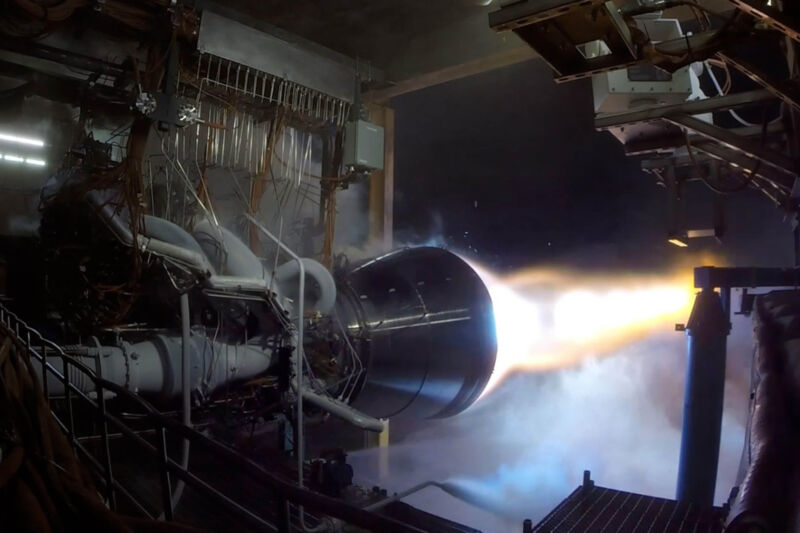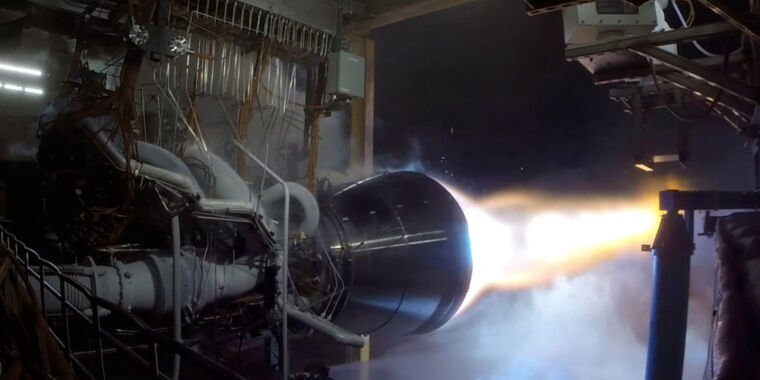
Welcome to Edition 6.02 of the Rocket Report! I’m on my third week at Ars, and the space beat is as busy as ever. Going forward, Eric and I will alternate work on the Rocket Report every other week. SpaceX broke its own booster reuse record this week, and a Chinese company made history with the first methane-fueled rocket to achieve orbit. Back on Earth, Blue Origin blew up an engine that was supposed to fly on ULA’s second Vulcan rocket.
As always, we welcome reader submissions, and if you don’t want to miss an issue, please subscribe using the box below (the form will not appear on AMP-enabled versions of the site). Each report will include information on small-, medium-, and heavy-lift rockets as well as a quick look ahead at the next three launches on the calendar.
8am ET update: The list of upcoming launches at the bottom of the Rocket Report has been updated to reflect the successful liftoff of the Chandrayaan-3 mission and delays of the next SpaceX and Rocket Lab missions.

Zhuque-2 rocket makes history. A commercial Chinese firm named LandSpace launched its Zhuque-2 rocket July 11 (US time) and made history as the first company to send a methane-fueled launcher into orbit, beating a bevy of US vehicles to the milestone, Ars reports. In its current form, the Zhuque-2 rocket can loft a payload of up to 1.5 metric tons into a polar Sun-synchronous orbit.
Methane is all the rage … There are numerous methane-fueled rockets in development, including SpaceX’s Starship, United Launch Alliance’s Vulcan, Blue Origin’s New Glenn, and Relativity’s Terran R, to name a few. All those can lift significantly more payload to orbit than LandSpace’s Zhuque-2, but the Chinese commercial space sector won the “race” to reach orbit with a methane-fueled vehicle. Methane has several benefits in rocketry, and one big one is it makes engines easier to refurbish and reuse. LandSpace’s Zhuque-2 booster is designed to eventually be reusable.
Virgin Galactic announces window for next commercial flight. On the heels of Virgin Galactic’s first commercial suborbital flight June 29, the company has announced that the window for its next mission opens August 10. Virgin Galactic, founded by billionaire Richard Branson, hopes to launch suborbital hops to the edge of space on a monthly cadence going forward.
Passenger list pending … Virgin Galactic said it would fly three paying passengers on the August flight but did not announce their identities. The June 29 mission was a research flight for the Italian government, but the next flight is expected to carry private space tourists. The company says it charges about $450,000 per seat for commercial space tourist missions and has about 800 would-be passengers waiting to fly. (submitted by EllPeaTea)
Rocket Lab’s next launch will take another step toward reuse. The next launch of Rocket Lab’s Electron rocket will feature another attempt to recover the first-stage booster at sea. Rocket Lab’s CEO, Peter Beck, says the company is taking methodical steps toward eventually reusing the first stage of the light-class Electron rocket but did not identify a timetable for re-flying a booster, Space News reports.
Focusing on marine recovery … Rocket Lab recovered several Electron boosters intact since announcing plans to reuse the rocket’s first stage in 2019. But progress has been relatively slow, and Rocket Lab is now focusing on retrieving boosters from the sea downrange from its launch site in New Zealand, rather than using a helicopter to pluck the rockets and their parachutes out of mid-air. Rocket Lab says the boosters recovered from the water are in better shape than expected, and this next flight—slated to carry seven small satellites into orbit—will debut an optimized parachute design and changes inside the booster to prevent salt water from damaging sensitive internal components.
Astra seeking to raise more money. Astra is pursuing a capital-intensive development of its new Rocket 4 launch vehicle at a time when its stock price has been on a precipitous decline. Now Astra is planning a “reverse stock split” and is attempting to raise up to $65 million through an offering of common stock, CNBC reports. A reverse split can be seen as a sign a company is in distress and is trying to “artificially” boost its stock price, or it can be viewed as a way for a viable company with a beaten-up stock to continue operations on a public stock exchange.
Astra is short on cash … In its most recent quarterly financial report released in May, Astra said there was “substantial doubt” about the company’s ability to continue. At the time, Astra said its production and operation plans will be scaled back or curtailed if it is unable to raise “substantial additional capital.” Astra shelved its Rocket 3 small satellite launch vehicle last year after five failures in seven orbital launch attempts. It’s now focusing on development of a larger vehicle called Rocket 4 and spacecraft propulsion systems. (submitted by Ken the Bin)
India wants to get in on the small-satellite launch market. A division of India’s Department of Space has announced an effort to transfer technology for the country’s newest rocket—the Small Satellite Launch Vehicle (SSLV)—to the private sector. Indian rocket programs have traditionally been managed by the government, but the commercial arm of the Indian space agency last year awarded a contract to Indian industry to build five Polar Satellite Launch Vehicles on a commercial basis. The PSLV is a medium-class rocket, and the new SSLV is aimed at the smaller end of the satellite launch market.
There are questions about the demand for small launch vehicles … India has carved a place of its own in the international launch market, primarily due to the success of its PSLV rocket. The smaller SSLV is designed to launch payloads up to 500 kgs (1,100 lbs) into low-Earth orbit, a market segment seemingly saturated by commercial rocket companies. Many of those companies are already pivoting to bigger rockets as they see more customer interest in the medium to heavy end of the launch market. While India’s domestic space industry may have a use for a dedicated small launcher, there are major questions about the demand signal internationally. (submitted by Ken the Bin)

